-
MSPM0C: A New Standard 32-Bit MCU for 8-Bit and 16-Bit MCU Applications SLAT167 February 2024 MSPM0C1103 , MSPM0C1103-Q1 , MSPM0C1104 , MSPM0C1104-Q1
-
MSPM0C: A New Standard 32-Bit MCU for 8-Bit and 16-Bit MCU Applications
MSPM0C: A New Standard 32-Bit MCU for 8-Bit and 16-Bit MCU Applications
Insights of the 8-Bit and 16-Bit MCU Market Trend
It has been decades since the first 8-bit and 16-bit MCUs were introduced into the market. With the rise of the performance needs, the 32-bit MCUs are becoming more and more popular, but there is no sign of the 8-bit or 16-bit MCU market TAM (Total Available Market) declining. In this market, the needs of these simple and low-cost MCUs have not decreased. The supply and capacity investment of these legacy MCUs is still limited, compared with the 32-bit MCUs, however, there is a strong demand from industrial, automotive (such as body and powertrain), and consumer IoT products. As a result, the 8-bit and 16-bit MCU market is forecasted to reach $7.3bn and $6.1bn in 2026 ($13.4bn in total), respectively, with a CAGR of 6.4% and 7% from 2021 to 2026. This market is still large and worth a continuous investment.
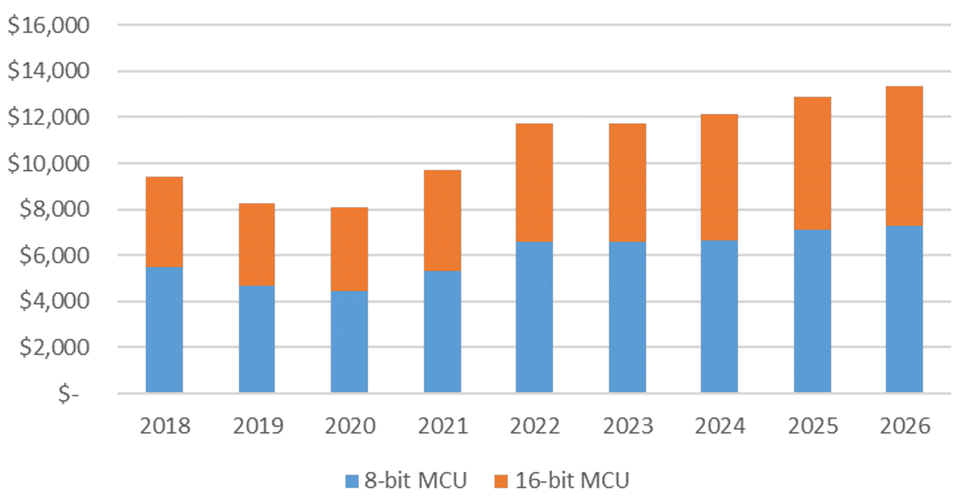 Figure 1 8-Bit and 16-Bit MCU
Market Trend
Figure 1 8-Bit and 16-Bit MCU
Market Trend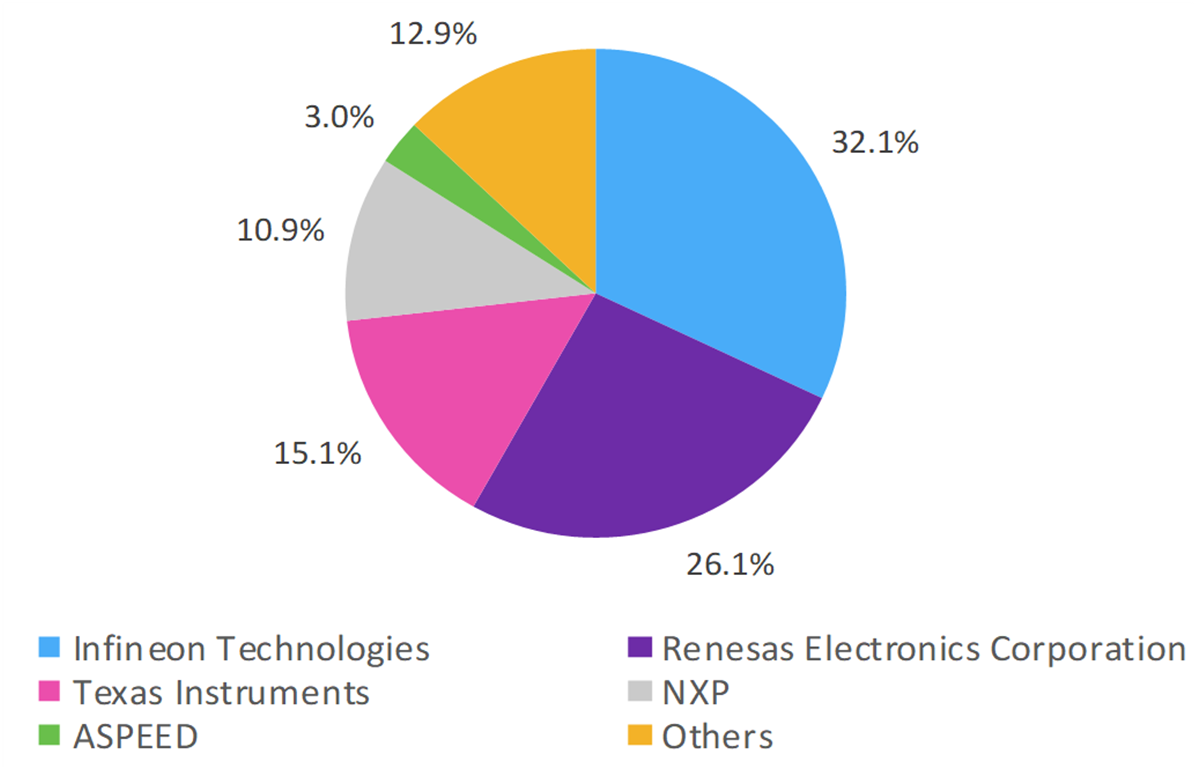 Figure 3 4-Bit and 8-Bit MCU Top Five
Figure 3 4-Bit and 8-Bit MCU Top Five Suppliers in 2021
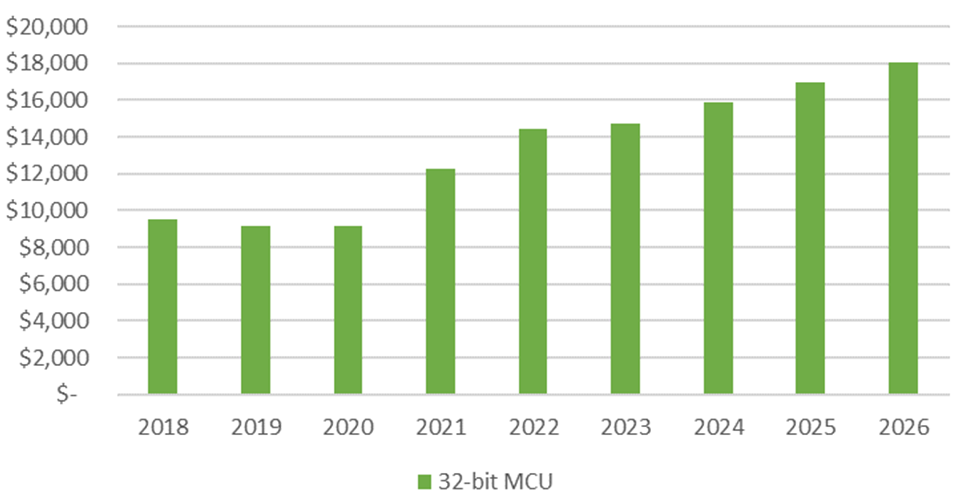 Figure 2 32-Bit MCU Market
Trend
Figure 2 32-Bit MCU Market
Trend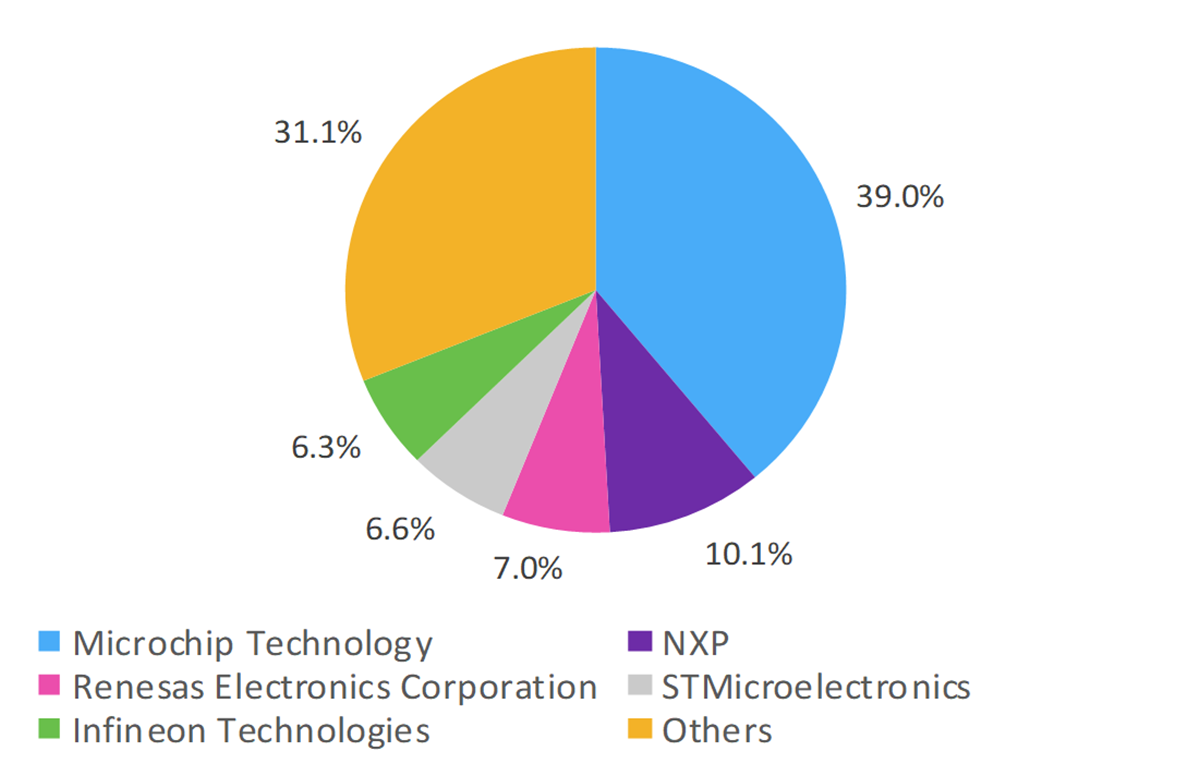 Figure 4 16-Bit MCU Top Five
Figure 4 16-Bit MCU Top Five Suppliers in 2021
Engineers are facing the performance and cost challenges, as the majority of the existing 8-bit and 16-bit MCUs were built decades ago, based on a legacy process node such as 180nm and beyond. These legacy technologies are not able to meet the improved performance requirement, and can be replaced by newer technologies gradually. As a result, those legacy MCUs will not be competitive in the market eventually. But the market still exists for simple and low-cost MCUs for a variety of different applications. To address this market need, TI introduced a new low-cost MSPM0C MCU family based on the newest manufacturing technology and advanced process nodes. The MSPM0C MCU family offers a 32-bit ARM Cortex-M0+ core, that is lower cost but with improved performance.
TI MSPM0C MCU Overview
MSPM0C is part of TI MSPM0 MCU portfolio, MSPM0C is an ultra-low cost, general-purpose, self-programmable MCU targeted at basic system management, such as monitoring, analog sensing, and communication applications. Usually, customers require these MCUs to implement one or two simple tasks. With the new design and advanced technology, MSPM0C offers a wide temperature range from -40°C to +125°C. AEC-Q100 is also available, and can be used in different applications across industrial, automotive, appliances, and personal electronics.
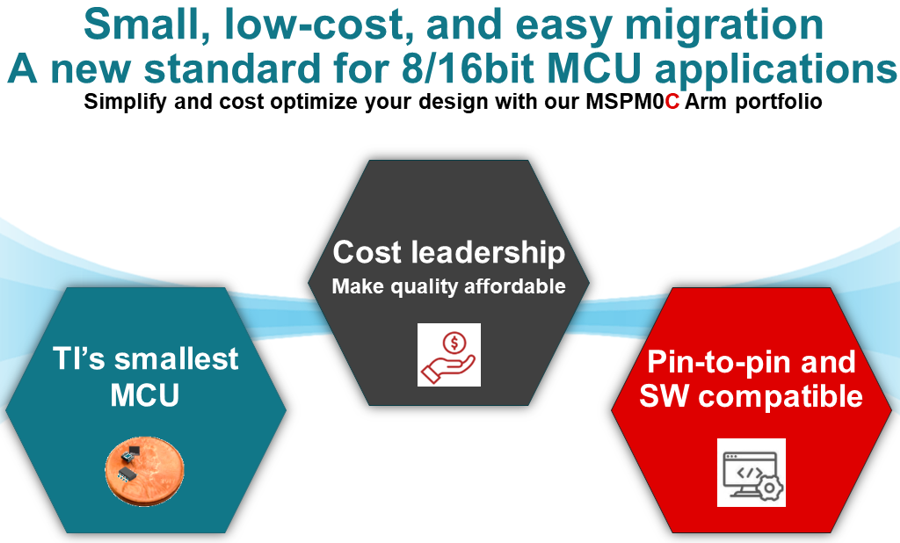
For more information, see the product folder.
- MSPM0C1104 product details and design resources
- LP-MSPM0C1104 product page
IMPORTANT NOTICE AND DISCLAIMER
TI PROVIDES TECHNICAL AND RELIABILITY DATA (INCLUDING DATASHEETS), DESIGN RESOURCES (INCLUDING REFERENCE DESIGNS), APPLICATION OR OTHER DESIGN ADVICE, WEB TOOLS, SAFETY INFORMATION, AND OTHER RESOURCES “AS IS” AND WITH ALL FAULTS, AND DISCLAIMS ALL WARRANTIES, EXPRESS AND IMPLIED, INCLUDING WITHOUT LIMITATION ANY IMPLIED WARRANTIES OF MERCHANTABILITY, FITNESS FOR A PARTICULAR PURPOSE OR NON-INFRINGEMENT OF THIRD PARTY INTELLECTUAL PROPERTY RIGHTS.
These resources are intended for skilled developers designing with TI products. You are solely responsible for (1) selecting the appropriate TI products for your application, (2) designing, validating and testing your application, and (3) ensuring your application meets applicable standards, and any other safety, security, or other requirements. These resources are subject to change without notice. TI grants you permission to use these resources only for development of an application that uses the TI products described in the resource. Other reproduction and display of these resources is prohibited. No license is granted to any other TI intellectual property right or to any third party intellectual property right. TI disclaims responsibility for, and you will fully indemnify TI and its representatives against, any claims, damages, costs, losses, and liabilities arising out of your use of these resources.
TI’s products are provided subject to TI’s Terms of Sale (www.ti.com/legal/termsofsale.html) or other applicable terms available either on ti.com or provided in conjunction with such TI products. TI’s provision of these resources does not expand or otherwise alter TI’s applicable warranties or warranty disclaimers for TI products.
Mailing Address: Texas Instruments, Post Office Box 655303, Dallas, Texas 75265
Copyright © 2024, Texas Instruments Incorporated